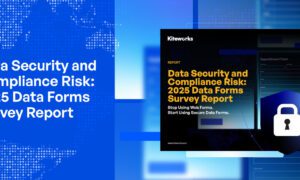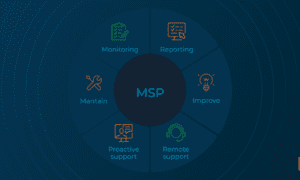When was the last time you locked the front door and still felt uneasy? That’s the feeling many IT leaders get when new exploits make headlines. It’s not that their systems are wide open—it’s that modern threats don’t charge in. They slip past defenses quietly and wait. Today’s cyberattacks don’t explode all at once. They unfold in silence, hiding behind normal activity until one missed signal turns into a major breach.
In this blog, we will share what security systems need to catch threats early, how to find gaps before they’re exploited, and why acting fast is the key to staying ahead.
The Timeline Is Tighter Than You Think
Cyberattacks today don’t follow a movie script. There’s no dramatic countdown, no ominous music. Real threats hide behind regular activity. An attacker might spend weeks inside your system without raising a single flag. By the time something looks wrong, they’re already two steps ahead.
The SolarWinds breach proved this in real time. The attackers didn’t just break in. They embedded themselves into the supply chain, distributing malware through trusted software updates. Thousands of organizations installed the compromised code thinking they were patching up weaknesses. Instead, they were opening the door.
This kind of long-game strategy is more common now. Attackers aren’t after a quick grab. They want control. Access to identity systems. Lateral movement across networks. And they’re patient. Which means if your system only reacts to loud, obvious alerts, it’s already out of date.
The Right Tools Before It’s Too Late
The reality is, many companies already have pieces of a strong defense. They’ve got endpoint protection. Maybe even network monitoring. But if those tools can’t talk to each other, they’re just digital islands. A strong defense depends on connection, context, and speed.
That’s where Heimdal’s XDR platform changes the game. Instead of juggling separate tools and hoping nothing gets missed, this unified solution ties everything together. It sees across your network, endpoints, email, and identity layers. That means a suspicious login attempt from an unknown device doesn’t get treated like an isolated event. It gets flagged, analyzed, and, if needed, stopped—before anything spreads.
And because it uses AI and threat intelligence to map out the potential path of an attack, you’re not just reacting. You’re predicting. That’s a big shift from traditional setups that wait for the threat to reveal itself.
In short, it’s not about more tools. It’s about better coordination. Heimdal’s platform makes sure your alerts tell a story—one you can understand and respond to before the last page gets written.
What Real Readiness Looks Like
Many organizations believe they’re ready because they’ve invested in cybersecurity. But preparation is not just about spending money or having antivirus installed. It’s about knowing your system inside and out.
Can you tell how many shadow IT devices are active on your network right now? Can your system isolate and shut down a compromised endpoint without taking down half your operations? Have your employees received real phishing simulations recently, not just a training video from 2021?
These questions matter. Because the biggest risks often come from gaps you don’t know exist. And attackers know that. They look for unpatched devices, stale user credentials, or overly trusted internal apps. Anything that gives them a quiet foothold.
And once they’re in? It’s not about breaking stuff right away. It’s about observing. Finding value. Waiting for the moment when access can be turned into damage.
The Role of Human Error and Overload
Another challenge: the humans behind the dashboard. The average SOC analyst fields thousands of alerts every day. Many of them are false positives. Some are duplicates. In this noise, it’s easy to overlook the alert that actually matters.
This is why automation matters. But it’s also why clarity is critical. If your team has to choose between checking an alert or eating lunch, you don’t have a security problem—you have a workflow problem.
High-performing systems reduce cognitive load. They give analysts a prioritized view of what’s actually risky. They highlight patterns. They provide evidence. And when needed, they automate the response. So the humans can focus on strategy, not cleanup.
Shifting Security Culture from Reactive to Proactive
Organizations that avoid breaches don’t just have better tech. They have a different mindset. Instead of thinking “how do we fix what goes wrong,” they ask, “how do we stop this before it starts?”
That includes things like zero-trust access, regular tabletop exercises, and understanding how normal behavior looks on their network. It also means knowing their industry-specific risks. A hospital will have different vulnerabilities than a financial firm. But both need the same principle: act before you have to react.
The best systems are not only secure—they’re self-aware. They learn from the small signals and adapt before the attack becomes obvious. That’s not magic. That’s design.
The Broader Picture: Cybersecurity as a Business Strategy
One of the most important shifts in the last few years is seeing cybersecurity not as an IT concern, but as a business priority. A data breach isn’t just a technical failure. It’s a financial hit, a PR crisis, a legal problem, and sometimes a leadership shakeup.
Just ask companies that faced ransomware attacks and ended up paying millions—or losing more in customer trust. Or school districts that were forced to cancel classes after losing access to basic systems. In today’s world, security resilience is directly tied to business continuity.
Boardrooms are starting to get this. But middle layers of leadership often still treat security as a checkbox. Something to audit annually, not refine continuously. That mindset is a liability. Because the threats aren’t waiting for budget season.
The bottom line? A breach is not a beginning. It’s the final step in a long chain of missed signs, ignored warnings, and overworked defenses. The real question isn’t “what should we do if we get breached?” It’s “what should we already have in place so it doesn’t get that far?”
The answer is a system that doesn’t just react—it predicts. A team that isn’t drowning in alerts but guided by clarity. And a strategy that understands one login attempt could be the start of something bigger.
Before the breach makes the headlines, make sure your systems have already written a better ending.



































